
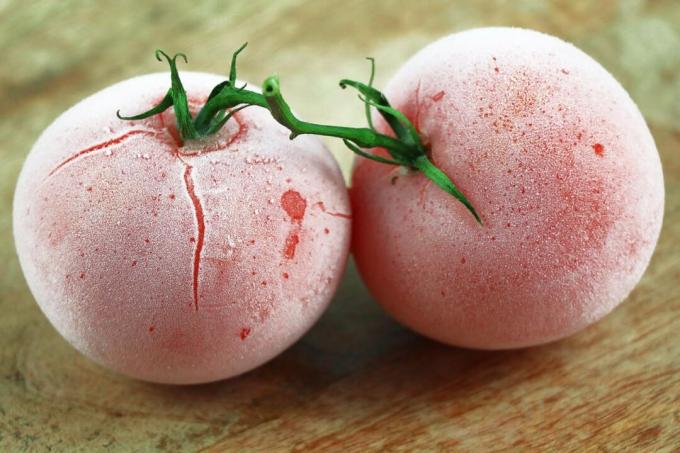
Table of contents
- ideal temperatures
- Protect from the cold
- effects of cold
- harvest tomatoes
- Do not expose to frost
As summer goes and fall comes, the nights get cooler. The following article explains which temperatures the tomatoes can still tolerate and how long they can stay outside.
ideal temperatures
Sunny, warm and dry are the ideal growing conditions for tomatoes. Then, over time, the fruits become large, plump, juicy, richly red and tasty. Even in the autumn months, the plants can continue to thrive, with warm daytime temperatures, flowers can still appear, from which fruits will develop. The ideal growing temperatures for tomatoes are as follows:
- in summer between 18° and 25° Celsius
- ideal for maturation
- not below 15 ° Celsius for a long time
- never below 10° Celsius (often on autumn nights)
A notice:
If the temperatures in autumn are permanently too cold at night, i.e. below 15° Celsius and lower, then they can still The fruits on the shrub no longer develop properly, are malformed, remain small or the flowers fall before then away.
Protect from the cold
Warm, sunny days prevail from September to October, but at night it starts to get cold and there are strong ones Temperature fluctuations, then it makes sense if the plants are not yet harvested and should remain outside, these in pack up for the night. This should be done as follows:
- Use plant fleece
- put carefully around the plants in the evening
- leave no openings
- decrease again when it gets warm in the morning
Tip:
A construction made of flexible rods, which are attached around the row of tomato plants, so that a kind of tunnel is created, is also helpful for this. The fleece can then be pulled over this in the evening so that each plant does not have to be wrapped individually. In the morning, the fleece is then simply pulled back.
effects of cold
Not only that the fruits of the tomatoes are damaged at constantly colder temperatures and can no longer develop properly. The rest of nature also slowly retreats in autumn. Therefore, the following problems may arise in the fall:
- Bees and bumblebees fly less often
- existing flowers are no longer pollinated
- no more fruit can form
harvest tomatoes
If the summer is slowly over, you should think about harvesting the tomato plants that are still there, because just now very strong temperature fluctuations between nights and days affect the fruits as well as the plants themselves can. If a greenhouse is available, this is the suitable location for the autumn period. Because here the remaining flowers can still develop and the fruits can still ripen.

When harvesting, the following should be observed:
- also harvest green, firm tomatoes
- put in a carton
- to lay next to each other
- do not stack
- use several boxes if necessary
- close well
- there should be no light
- put in a warm place
Tip:
Tomatoes are nightshade plants. The fruits therefore only ripen at night. To turn red when the green fruits are already well developed, they need darkness and a warm place. After about ten to fourteen days, the fruits stored in this way are dark red and ripe and can be enjoyed. Adding a ripe apple or banana is helpful for faster ripening.
Do not expose to frost
However, if you want to leave your tomatoes on the vine for as long as possible, you should make sure that the night-time temperatures never fall below 5° Celsius. And if night frost sets in, then the fruits are no longer edible. Therefore, the harvest should definitely be carried out beforehand. Tomatoes are stored depending on their stage of ripeness:
- unripe, still green to orange fruits
- at warm temperature, preferably dark
- optimal up to 20° Celsius
- ripe, red, fresh tomatoes
- cool place
- between 12° and 18° Celsius
Tip:
Tomatoes do not belong in the refrigerator, not even if they are to be stored briefly in summer. Because the cool temperatures that prevail here also take away the taste of a tomato that has ripened well in the sun. The fruits become pale and no longer taste good. In addition, rotting is promoted by the cold in the refrigerator.
 Home editorial office
Home editorial office
Learn more about tomatoes
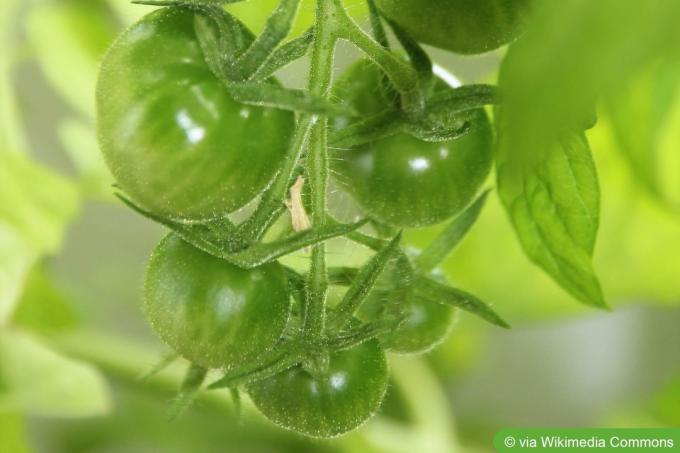
Mexican Honey Tomato: Taste & Cultivation
With the "Mexican honey tomato", hobby gardeners can bring a particularly sweet tomato variety into their garden. Due to its low acidity, it is one of the most popular sweet tomatoes and at the same time very easy to care for.
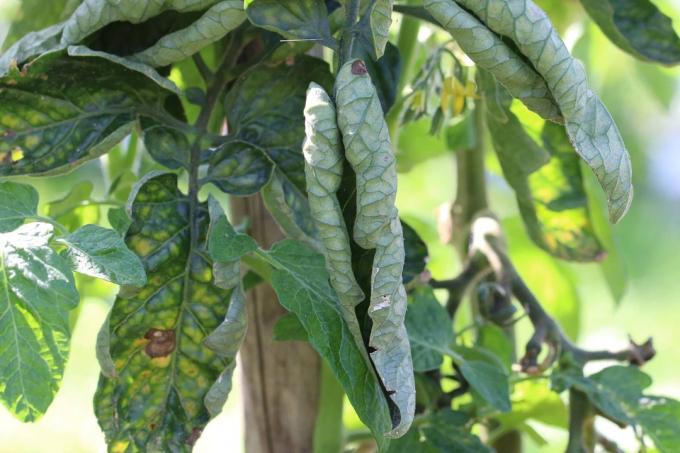
Tomato leaves curl: what to do?
There are many causes of curled leaves on tomato plants. Some are harmless, others can ruin crops. So waiting is not an option. Like a detective, you must search for clues. And then, if feasible, tailor-made countermeasures. Here's what to do when tomato leaves curl.
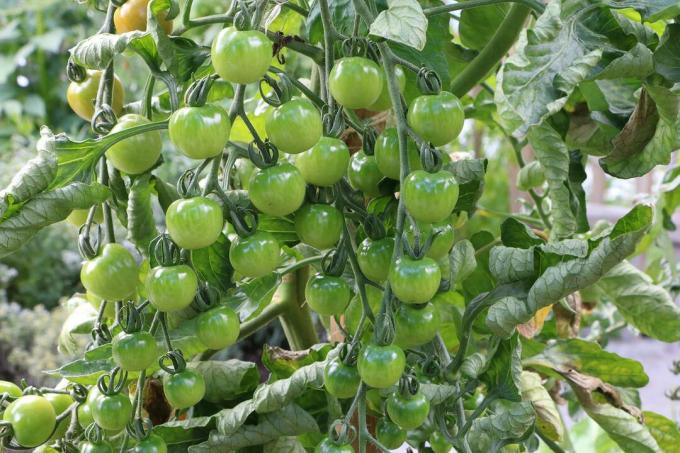
Fertilize tomatoes: how often, when and with what?
Tomatoes need a consistently high amount of nutrients for the development of flowers and fruits. In addition to choosing the right fertilizer, the amount and frequency also play an important role. All essential information for an optimal dosage can be found here.
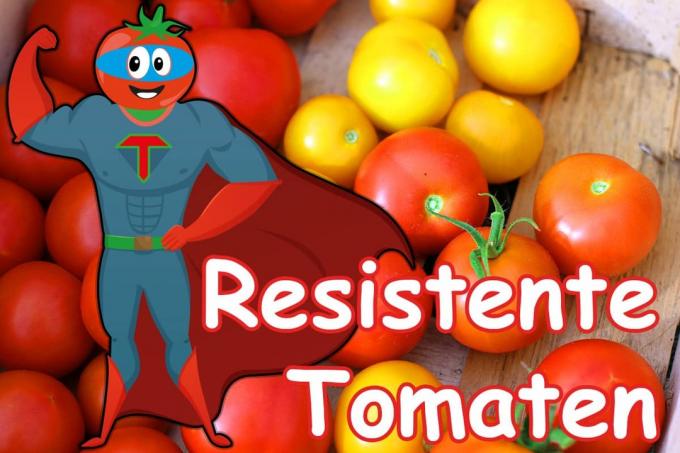
11 resistant tomato varieties defy rain and disease
Tomatoes are considered to be relatively easy to care for, but rain and numerous diseases can bother them. Fortunately, there are numerous tomato varieties that are resistant to many dreaded tomato diseases. We present the most popular specimens in this article.
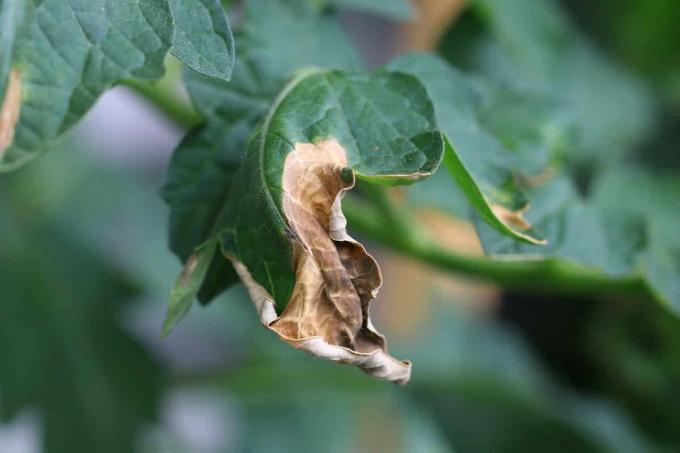
Control late blight and late blight in tomatoes
If pathogens of brown blight and late blight have settled on tomato plants, there is little hope of successful control. Home remedies and mechanical interventions only make sense in the early stages. It is all the more important that you prevent infections in a targeted manner through care measures.

How healthy are tomatoes? Information on calories, nutritional values & Co.
Snack healthy? The tomato makes it possible! Find out here why the red fruit should end up on the plate more often!



